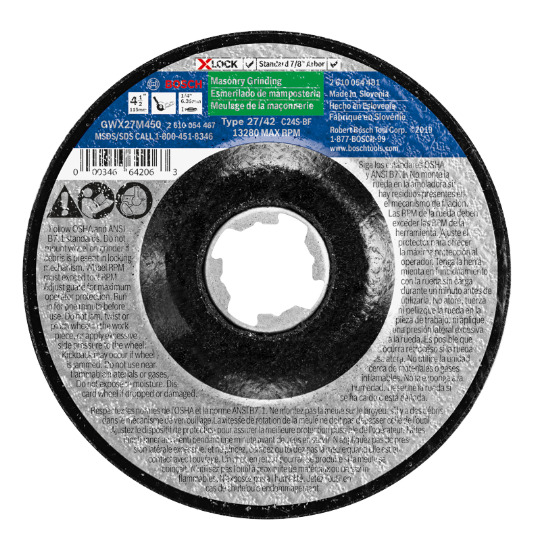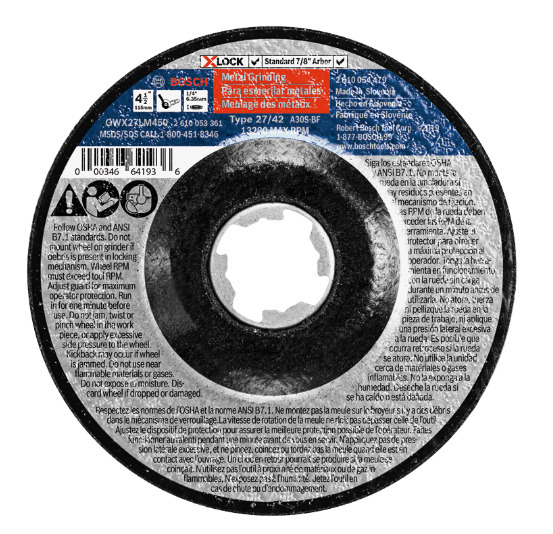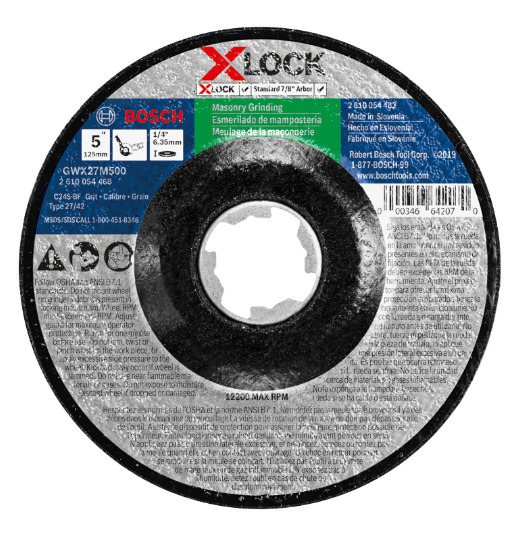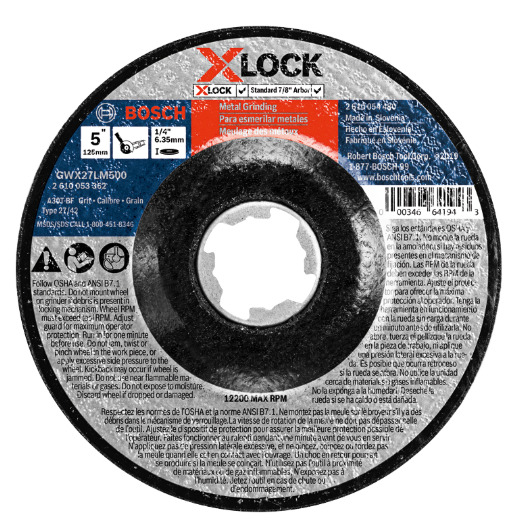Abrasive Grinding Wheels
Filter
87 items
content loaded
SKU#:162GWX27M450
MFG#:GWX27M450
Price
$4.99 (EACH)
Item pricing and delivery options may vary based on location. Select your local branch for best pricing.
SKU#:162GWX27LM450
MFG#:GWX27LM450
Price
$5.29 (EACH)
Item pricing and delivery options may vary based on location. Select your local branch for best pricing.
SKU#:162GWX27M500
MFG#:GWX27M500
Price
$4.99 (EACH)
Item pricing and delivery options may vary based on location. Select your local branch for best pricing.
SKU#:162GWX27LM500
MFG#:GWX27LM500
Price
$4.29 (EACH)
Item pricing and delivery options may vary based on location. Select your local branch for best pricing.
Price
$8.99 (EACH)
Item pricing and delivery options may vary based on location. Select your local branch for best pricing.
Price
$7.29 (EACH)
Item pricing and delivery options may vary based on location. Select your local branch for best pricing.
SKU#:63021015
MFG#:21015
Price
$16.59 (EACH)
Item pricing and delivery options may vary based on location. Select your local branch for best pricing.
SKU#:63020015
MFG#:20015
Price
$7.99 (EACH)
Item pricing and delivery options may vary based on location. Select your local branch for best pricing.
SKU#:162GWX27M450
MFG#:GWX27M450
Price
$4.99 (EACH)
Item pricing and delivery options may vary based on location. Select your local branch for best pricing.
SKU#:162GWX27LM450
MFG#:GWX27LM450
Price
$5.29 (EACH)
Item pricing and delivery options may vary based on location. Select your local branch for best pricing.
SKU#:162GWX27M500
MFG#:GWX27M500
Price
$4.99 (EACH)
Item pricing and delivery options may vary based on location. Select your local branch for best pricing.
SKU#:162GWX27LM500
MFG#:GWX27LM500
Price
$4.29 (EACH)
Item pricing and delivery options may vary based on location. Select your local branch for best pricing.
Price
$8.99 (EACH)
Item pricing and delivery options may vary based on location. Select your local branch for best pricing.
Price
$7.29 (EACH)
Item pricing and delivery options may vary based on location. Select your local branch for best pricing.
SKU#:63021015
MFG#:21015
Price
$16.59 (EACH)
Item pricing and delivery options may vary based on location. Select your local branch for best pricing.
SKU#:63020015
MFG#:20015
Price
$7.99 (EACH)
Item pricing and delivery options may vary based on location. Select your local branch for best pricing.









